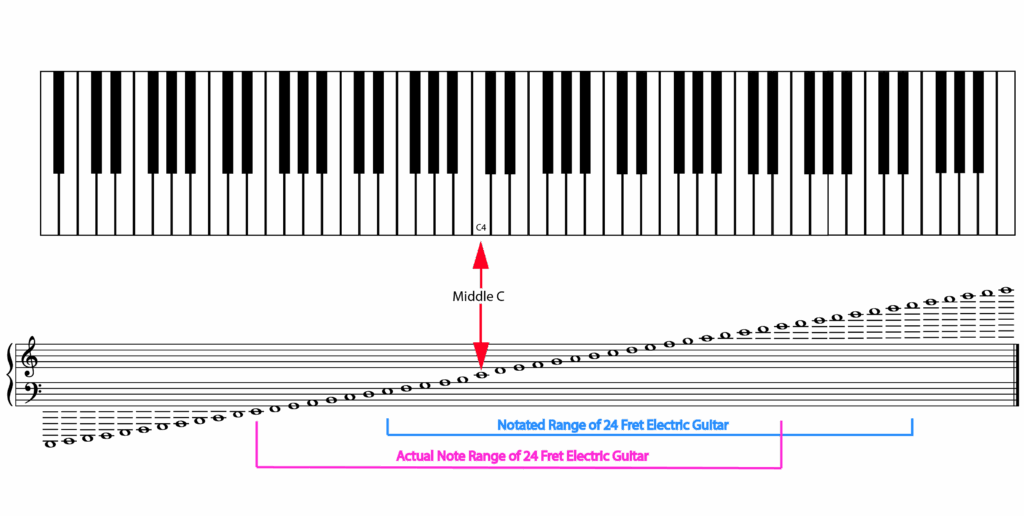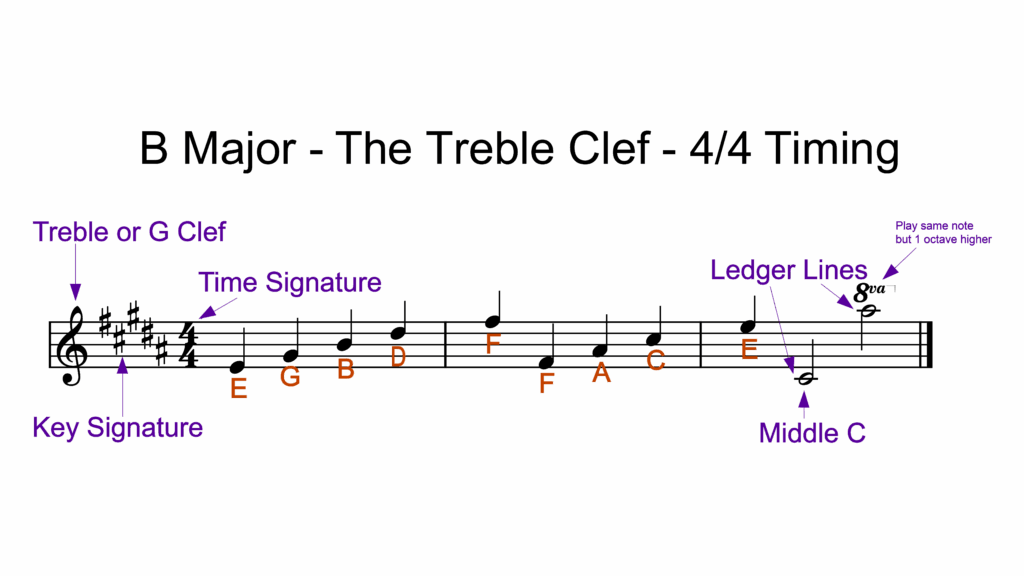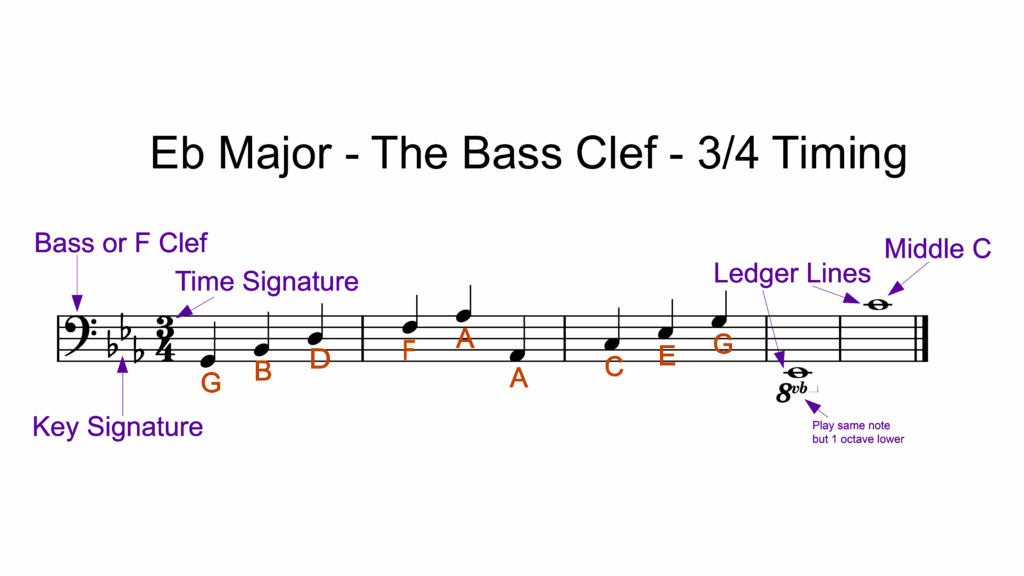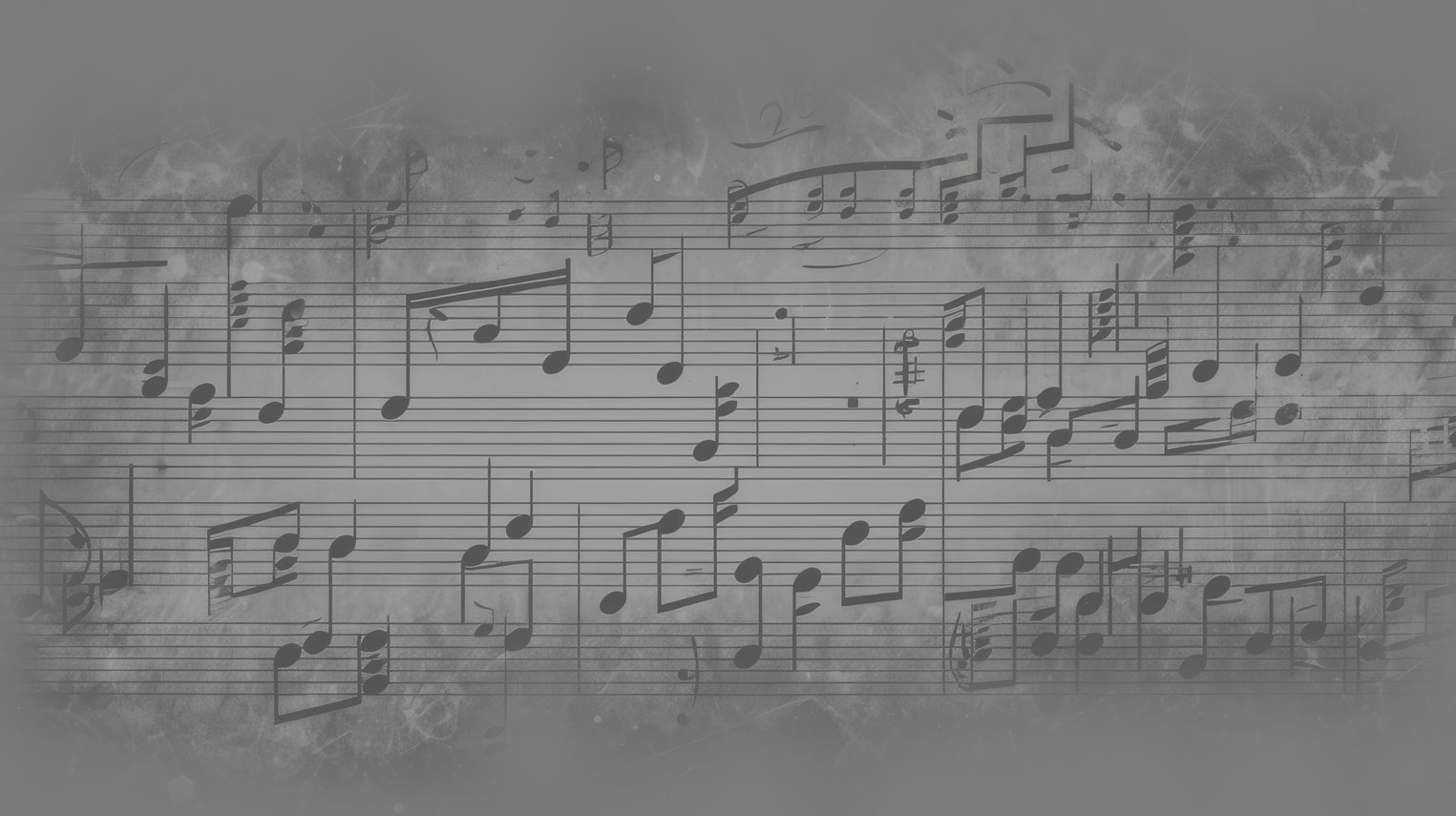Musical notation relies on the grand staff to accommodate instruments with wide pitch ranges, such as the piano, organ, or harp. The grand staff is created by combining a treble clef staff and a bass clef staff. These two staves are connected by a vertical bar line and a brace, which signals that both staves are for the same instrument.

Clefs and Their Functions
Treble Clef (G Clef): This clef is used for higher-pitched instruments and voices, and it typically notates pitches above middle C. The clef’s inner curve circles the second line from the bottom of the staff, designating that line as G4, or the G above middle C. To remember the notes on the lines (E, G, B, D, F) the mnemonic “Every Good Boy Deserves Fudge” is often used, while the notes in the spaces (F, A, C, E) spell out “FACE”.

Bass Clef (F Clef): Also known as the F clef, it is used for lower-pitched instruments and voices and generally notates pitches below middle C. The bass clef’s two dots surround the fourth line from the bottom, which is designated as F3, the F below middle C. Common mnemonics for the notes on the lines (G, B, D, F, A) include “Good Boys Deserve Fudge Always,” and for the spaces (A, C, E, G), “All Cows Eat Grass”.

Middle C and Ledger Lines
Middle C (C4) serves as the central point of the grand staff, connecting the treble and bass clefs. It is written on the first ledger line below the staff in the treble clef and on the first ledger line above the staff in the bass clef. This dual notation represents the same pitch, and its placement often indicates which hand should play the note on a keyboard instrument. Ledger lines are short, horizontal lines that extend the staff’s range to notate pitches above or below the standard five lines. Excessive use of ledger lines can make music difficult to read, so composers may use clef changes or octave displacement symbols like 8va or 8vb to improve legibility.
The Guitar as a Transposing Instrument
The guitar is a transposing instrument, meaning its notes sound one octave lower than they are written on the staff. This convention allows guitar music to be notated primarily in the treble clef, preventing the need for an unmanageable number of ledger lines for its lower notes. For example, when a guitarist reads a written C4 (middle C), the note they play will sound as C3. The standard tuning for a six-string guitar is E-A-D-G-B-E, which corresponds to the scientific pitches E2–A2–D3–G3–B3–E4. The written notes for the open strings on a treble clef are:
- Low E (E2 sounded) is written as E3, located in the space below the third ledger line.
- A (A2 sounded) is written as A3, located on the second ledger line below the staff.
- D (D3 sounded) is written as D4, located in the space below the first ledger line below the staff.
- G (G3 sounded) is written as G4, located on the second line of the staff.
- B (B3 sounded) is written as B4, located on the third line of the staff.
- High E (E4 sounded) is written as E5, located in the fourth space of the staff.


Leave a Reply
You must be logged in to post a comment.